Data Modelling Assignment: Case Analysis of Online Enrollment Systemat ABC University
Question
Task:
Context:
In Assessment 1, you performed a comprehensive requirement analysis for the online student enrolment system at the ABC University. With an in-depth understanding of the functional requirements of the System, you are now required to perform further analysis through process and data modelling. In doing so, you also need to provide a preliminary data storage design for the System.
Both process modelling and data modelling can be used to provide deeper understanding of a new System. Thus, they are an integral part of System Analysis. Process modelling describe business processes – i.e. the sequence of activities that people do; while data modelling seeks to describe the data flows through those processes. Data flow diagrams (including context diagrams) and entity relationship diagrams are the most common process and data modelling techniques used in industry.
Data Modelling Assignment Tasks: Please complete the following tasks:
Task 1. Create and document a Context Diagram for the System.
Task 2. Create and document a Level 0 Data Flow Diagram (DFD). The Level 0 DFD should contain all the major high-level processes of the System and how these processes are interrelated.
Task 3. Select three major and non-trivial processes from Level 0 DFD, decompose each of the processes into a more explicit Level 1 DFD.
Task 4. Using your own experience with similar online student enrolment systems and the information provided in the case study:
(i) Identify all the entities and their relationships in the System
(ii) Create and document an Entity Relationship Diagram (ERD) for the System.
Note: the case study has not and does not intend to provide a comprehensive description of entities in the System. You are expected to use your own experience with information systems in general and online student enrolment systems in particular to develop this ERD. For example, would Subject Name be an attribute for a Subject? Would Date of Birth be an attribute for Students?
Task 5. Should data be stored in files in a file system or in a database for the System? Justify your answer.
Task 6. Translate the ERD you developed in Task 4 into a physical relational database design. Document database tables and their relationship in MSWord file. Normalise your database design to the Third Normal Form (3NF).
Answer
Introduction to the context of data modelling assignment
Considering today’s situation, the demand for the online enrollment system has increased exponentially. The online enrollment system is used by the universities in order to have a more convenient process of student enrollment. The online enrollment system is used in various other processes by the universities. ABC University has implemented the student enrollment system. The online enrollment system also requires certain factors to function effectively. In this report, the functional requirement of the student’s online enrollment system has been discussed. The report also used the data modeling process in order to perform the analysis of the system. The design of the data storage system is also required which is mentioned in the report. The report uses data modeling as well as process modeling to have more explained knowledge and idea about the enrollment system. This is done as it is considered as an integral part of the system analysis process. Here we have discussed several factors related to process modeling. In this report, the analysis if the system is supported by several diagrams such as data flow diagrams as well as entity-relationship diagrams (ERD). These are the data modeling techniques that are important for system analysis and can help in discussing each entity that is involved in the system.
Task 1: Creation and Documentation of Context diagram
In this section, the context diagrams for the student enrollment system are discussed. The context diagram is used to describe the process as well as the entities involved in the system. The context diagram of the system is also considered as the 0 levels data-flow diagram (DFD). The context level diagram is used in order to understand and analyze the enrollment system’s context and its operational boundaries(Miller& Dunn, 2018). This helps in the modeling of the system. The context diagram helps in understanding the entities that are inside or outside of the system. The main aspects of the context diagram are to show the relation of the entities with the corresponding system.
In this section, the operational boundaries of the system are discussed with the help of the diagram. In this diagram, several entities are described. The context level diagram also helps in getting the idea of the information flow;the informational flow between the system and the entities. The diagram also includes several officials related to the enrollment system. The context diagram will provide ideas for designing the system. The context diagram will include several processes such as login, examination, enrollment, authentication, etc. The system will include several processes that will have a contribution in convince provided to the user. The student can get enrolled through this system. The system will also include the payment process, enrollment details, students’ details required for the authentication, etc. Factors such as enlistment authority are not included. This is due to the proficiency check of the understudies. In this context, the business-related factors are also considered. The external entities are also included. The external entities of the system are department heads, management staff, students, and enrollment officers.
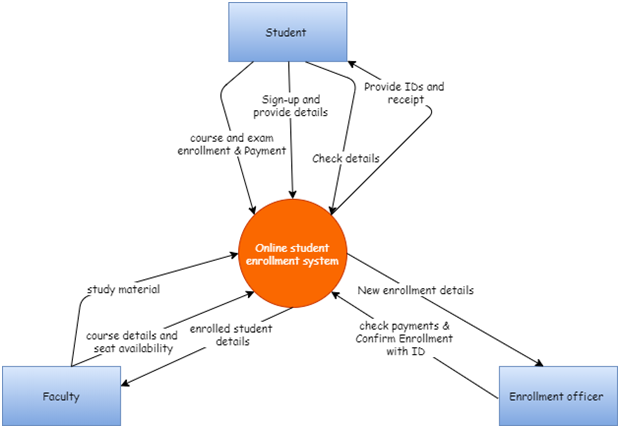
Figure 1: Context diagram of the system
(Source: created by the student)
Task 2: Creation and Documentation of “0 level” Data flow diagram 0 level
The data flow diagrams are important factors in considering the factors related to the data modeling of the system. The data flow diagrams are used to analyze the flow of information through the system(Tilley, 2019). This also considers both internal and external factors. In this section, the 0 level data flow diagram is described for the online student enrollment system. This helps in understanding the process of interaction of the system with the users(Jiang, Chang& Du, 2016). Considering the business factors related to the 0 level DFD diagram, there are several processes. It can be used for the sales management, management of the employee, customers, payrolls, etc.
In this section, the DFD diagram is used to analyze the operational process of the system(Cuesta, 2016). ABC University needs an enrollment system that will involve several processes. The process involved in the system has a different purpose. The enrollment of the student is done by the enrollment process. The system also involves the examination enrollment process. The examination enrollment of the students requires several authentication details. The system will also have a payment process option. The students can make payments throughout the system. This process has to be analyzed in order to have an effective development process. The system will have a course management option. The study material details are also provided in the system. The students can access this information related to the courses and can make decisions accordingly. After the course management process, the students can get enrolled in the selected course.
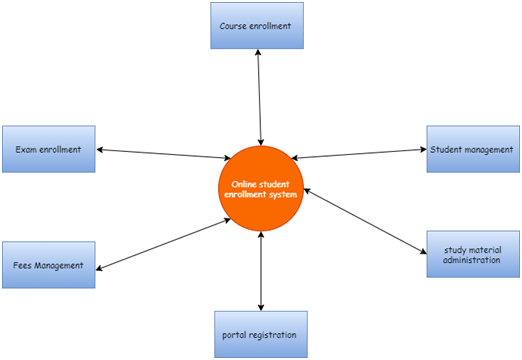
Figure 2: Data flow diagram 0 levelof the system
(Source: created by the student)
Task 3: Decomposition of the Processes to “Level 1” Data Flow Diagram
The first level of data flow diagram helps in analyzing the in-depth process of the system. The entities that are explained in the 0 level data flow diagram are described in a more generalized form. The process is described in order to understand the information flow in the process. The information flow can be from one or more external entities related to the system. These entities are responsible for providing the required functionalities of the enrollment system. In the zero level data-flow diagram, various part of the enrollment system is discussed. In this section, 3 non-trivial processes are discussed. The one-level DFD is being demonstrated as helpful on account of the advancement of the online student enrollment system. It for the most part assists with perceiving the substances alongside their procedures(Zhang et al., 2017). Besides, level 1 DFD clarifies in more insight concerning the system substances and its procedures with consistent discernment, which is a lot of basic for a fruitful turn of events.
For the description of the three non-trivial processes, course enrollment, exam enrollment, and fee payment have been discussed(Sequeda, 2016). These three processes of online enrollment systems have different purposes. The course enrollment of the system includes the process of selection of the course by the students. The students get enrolled in the selected course. The course enrollment process is completed when the student completes the fee payment process. The fee payments can be done through the system server. The server provides a secure path for the money transaction process. In this enrollment system, the students can also enroll themselves in the exam. Exam enrollment requires proper authentication details. The students are requested to provide their login ID and other credentials such as password, personal details, course ID, etc. In the exam enrollment process, students are provided with the exam ID. The students also receive the fee payment receipts as well as course ID. Thus, the 0 level DFD model is discussed in more explicit ways.
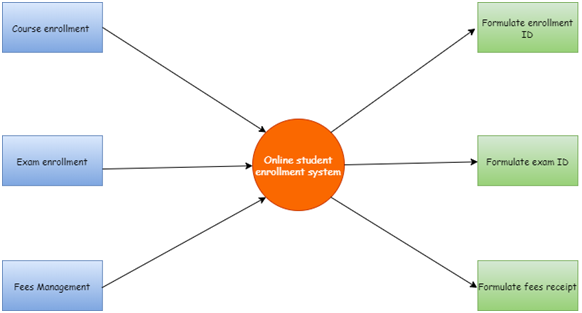
Figure 3: Data flow diagram 1 levelof the system
(Source: created by the student)
Task 4: Entities and ERD
i) Entities and their relation with the system
Several entities have been incorporated here, in order to make the database, more presentable and acknowledgeable. However, the all identified entities of the system have been demonstrated in the following section:
• Student:Here, in this case, at first the student entity can be considered, which will deal with storing of the data of different registered students in the online portal of the ABC University.
• Fees management: Fees management can be considered as another major entity in this system, which mainly engaged for the purpose of data regarding different payment transactions.
• Faculty: It can be considered as a major entity in this section, whether the faculty details of each of the significant course will be stored.
• Course enrollment:The course enrollment is another major entity of the system, which is engaged for detailing the enrollment details of course for new enrollment.
• Exam enrollment:Moreover, likewise, exam enrollment is also considered as another major entity, which will deal with the data regarding the exam enrollment of the enrolled student at ABC University.
• Study material management: It can be considered as another major entity of the system, which will be engaged for the purpose of recording the details regarding the study material of the enrolled students.
However, these are some possible entities and their relations with the online student enrollment system of the university, mentioned in the above section.
ii) Creation and Documentation of Entity-relationship diagram
After identification of all of the possible entities of the online student enrollment system, here, in this section, the main purpose is to develop the specific and significant entity-relationship diagram in case of the database of the online student enrollment system(Gordon, 2017). However, for storing all significant and sensitive data regarding the system, here, initially all possible attributes for each of the chosen entities of the online student enrollment system should be detected. Within the following Entity relationship diagram, the entities have been demonstrated through the utilization of rectangles, and their attributes have been shown using ellipse shapes (Kristi?na?achova? & Peter Trebun?a, 2019). However, the ER-diagram defines interrelated objects concerning attraction within a particular knowledge domain, and the primary model has been composed of the entities and the significant relationships between them. However, the following ER-diagram has been developed in order to demonstrate the frame of the database in case of the online student enrollment system of the ABC University, entirely and effectively, along with that all of the significant attributes for each of the vital entities of the system have been shown in the following entity-relationship diagram as well.
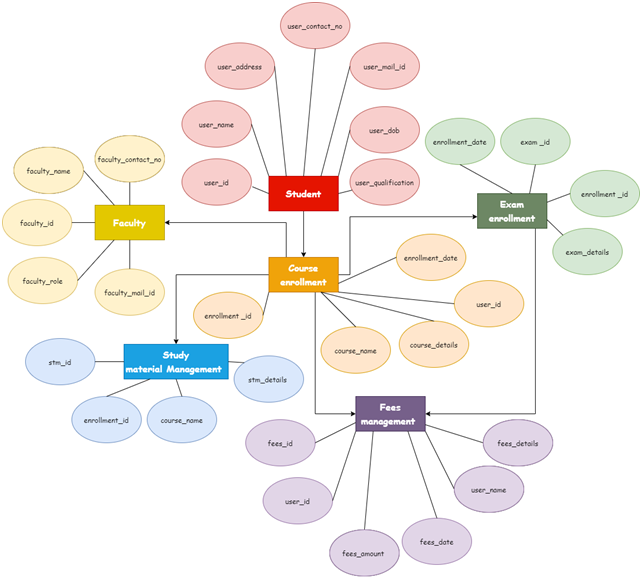
Figure 4: Entity relationship diagram of the system
(Source: created by the student)
Task 5: Data storage and justification
Storing data has been recognized as a significant and sensitive part of the entire process of any system. For all sorts of systems, the data need to be stored securely and perfectly, as the success of the entire system will be highly dependent on the process and place of data storage. However, here, in this case, there are two different options have been considered in order to store the data, such as the file system as well as database system; however, from an authentic study over these two options, it can be easily considered that database will be more significant in this case of the online student enrollment system of the ABC University for the purpose of storing different kinds of significant information. Since multiple different profits are there in case of recording the information within a specific and significant database, such as it includes different emerging features related to the storage, without consumption of a huge amount of cost. Furthermore, it provides proper data security as well. However, the following discussion will include a brief explanation regarding the different advantages behind the utilization of database as well as different drawbacks regarding the utilization of the specific and significant file system, for the purpose of storing data securely and efficiently.
However, few from the vital constraints regarding the utilization of the file system will be discussed in the following section of the discussion. Here, in this case, the files that have been recorded within the specific and significant file system loosely stuffed like the greater part of the activities which are attempted inside the document framework are not steady nor are they solid(West, Hoffman& Costello, 2017). Furthermore, in those systems, which are dependent upon the files, it contains different files recorded in several locations of storage; hence, a huge risk has been presented there concerning having several copies concerning different sorts of information recorded that can be the main reason behind a confusion of the user(Coronel & Morris, 2018). In addition, if there should arise an occurrence of the document framework, it gives low security, for example, one the record is spared in the framework any outsider could without much of stretch access those records as don't gives the office of confirmation, because of which the information put away could be lost or abused, and even document framework doesn't give the office of reinforcement and recuperation for its documents put away.So the option of the file system is not a great choice in this case.
On the other hand, the database system will be highly profitable for the system, firstly, as it reduces the redundancy of data. Moreover, data sharing features are enhanced in the case of the utilization of the database(Fisher et al., 2019).Information sharing is another significant component of database which expresses that the data put away in the database could without much of a stretch be shared among different individuals with approved access to those records which the client needs to share, along with that a few clients can likewise get to a similar document at once by having single access(Vidhya, Jeyaram&Ishwarya, 2016).Moreover, it supplies a higher level of data integrity, security as well as privacy too. Apart from that, it also holds the feature of data backup as well as the data recovery, which will help the university to prevent the issue related to data loss. Furthermore, it will also capable of providing greater consistency of data (Hoffer, Venkataraman&Topi, 2019). Thus, studying all of the profits regarding the utilization of the database, it has been considered as a better choice, in this case of the online student enrollment system of the university against the utilization of file systems.
Task 6: Normalization of database
Apart from all of the aforementioned tasks, here, in this case, the main objective is of simplifying the ER-diagram constructed previously following the structure of the physical relational database. Furthermore, different database table has been included in this case, in case of each entity of the online student enrollment system. Thus, in the following section, the diagram of the physical relational database will represent the specific and significant attributes for each table and by engaging 3NF approach, here, the primary key, as well as functional key for each of the entity of the online student enrollment system of ABC University, has been represented(Harrington & Harrington, 2016). Furthermore, through the physical relational database design, the relation between the entities of the database of the online student enrollment system has also been shown.
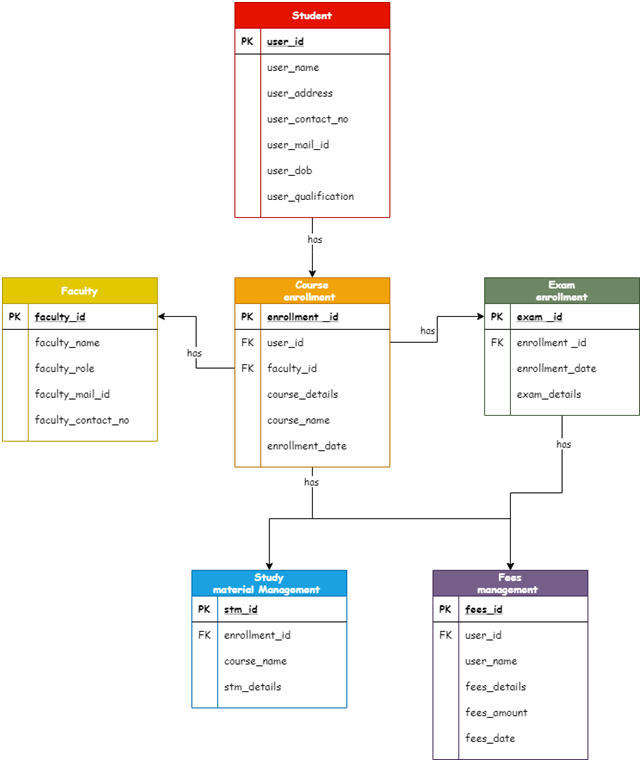
Figure 1: Physical relational database of the system
(Source: created by the student)
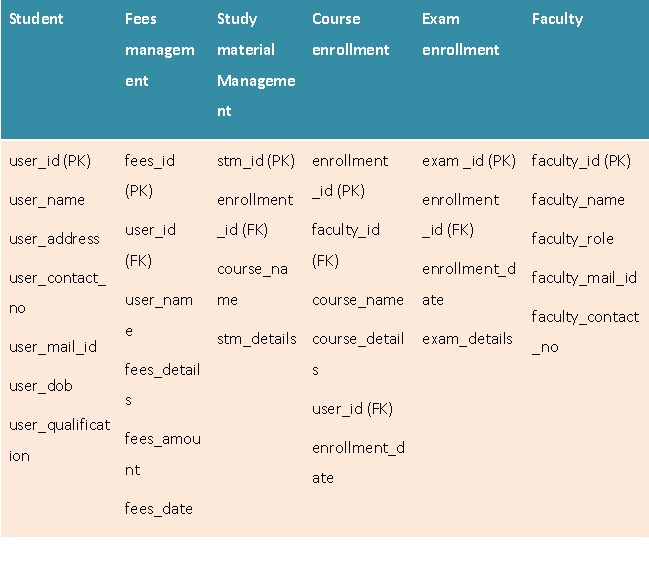
Conclusion
This report is entirely based upon the discussion of different aspects regarding the online student enrollment system of ABC University. This report will initially discuss and develop the specific and significant context diagram in case of the system, and, thereafter, it had discussed and constructed the different levels of data flow diagrams, such as 0 and, basing upon the context of the online student enrollment system. Furthermore, it had additionally discussed the different entities of the system, along with their significant relationship with the system. In addition, it had also developed the entity-relationship diagram for the system. However, thereafter this report additionally justifies that the choice of database is better the file system, in case of storing data of the online student enrollment system. Apart from these, in the end, it had normalized the database prepared previously. On the accomplishment of this discussion, it can be concluded that, after the creation of this system, the can be managed more properly and securely as well.
References
Coronel, C., & Morris, S. (2018). Database systems : design, implementation & management (13th ed.). Cengage Learning
US.INSERT-MISSING-URL.https://lesa.on.worldcat.org/oclc/1048922508
Cuesta, H. (2016).Practical data analysis (Second).Packt.INSERT-MISSING-URL.https://lesa.on.worldcat.org/oclc/960040595
Fisher, N. D. L., Fera, L. E., Dunning, J. R., Desai, S., Matta, L., Liquori, V., …Scirica, B. M. (2019). Development of an entirely remote, non-physician led hypertension management program. Clinical Cardiology, 42(2), 285–291. https://doi.org/10.1002/clc.23141
Gordon, K. (2017). Modelling business information : entity relationship and class modelling for business analysts. BCS, The Chartered Institute for IT. INSERT-MISSING-URL.https://lesa.on.worldcat.org/oclc/1004319314 Harrington, J. L., & Harrington, J. L. (2016).Relational database design and implementation (Fourth). Morgan Kaufmann/Elsevier.
INSERT-MISSING-URL.https://lesa.on.worldcat.org/oclc/947597075 Hoffer, J., Venkataraman, R., &Topi, H. (2019). Modern database management, global edition (13th ed.). Pearson Education Limited.Data modelling assignment INSERT-MISSING-URL.https://lesa.on.worldcat.org/oclc/1110488089
Jiang, P. K., Chang, P. S.-L., & Du, P. R. (2016). Engineering design and analysis (Ser. Applied mechanics and materials, v. 826).Trans Tech Publications.INSERT-MISSING-URL.https://lesa.on.worldcat.org/oclc/958547174
Kristi?na?achova?,& Peter Trebun?a. (2019). Modelling of electronic kanban system by using of entity relationship diagrams. ActaLogistica, 6(3), 63–66. https://doi.org/10.22306/al.v6i3.115
Miller, R. E., & Dunn, P. (2018). Teaching case: mihotel--applicant processing system design case. Journal of Information Systems Education, 29(1), 21–24. https://lesa.on.worldcat.org/oclc/7755371313 Sequeda, J. F. (2016). Integrating relational databases with the semantic web (Ser. Studies on the semantic web, vol. 022).IOS Press.INSERT-MISSING-URL.https://lesa.on.worldcat.org/oclc/957490964 Tilley, S. (2019). Systems analysis and design (12th ed.).
Cengage.https://public.ebookcentral.proquest.com/choice/publicfullrecord.aspx?p=6039756.
Vidhya, V., Jeyaram, G., &Ishwarya, K. R. (2016). Database management systems.Alpha Science International.INSERT-MISSING-URL.https://lesa.on.worldcat.org/oclc/1021806756
West, B., Hoffman, K., & Costello, M. (Eds.). (2017). Creative instructional design : practical application for librarians. Association of College and Research Libraries, a division of the American Library Association.https://public.ebookcentral.proquest.com/choice/publicfullrecord.aspx?p=4891398.
Zhang, L., Shi, L., Zhang, B., Zhao, L., Dong, Y., Liu, J., … Zhang, S. (2017). Probabilistic entity-relationship diagram: a correlation between functional connectivity and spontaneous brain activity during resting state in major depressive disorder. Plos One, 12(6), 0178386.https://doi.org/10.1371/journal.pone.0178386












